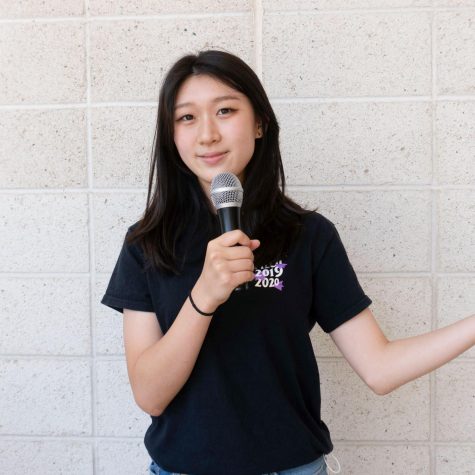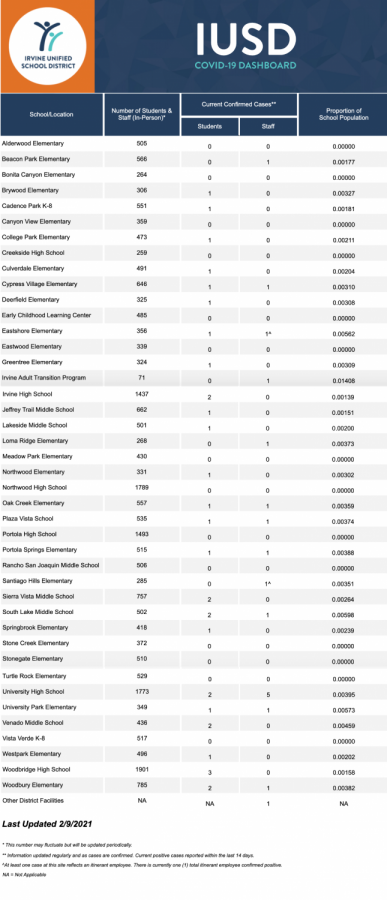COVID-19 Dashboard Serves as Accurate Communicator to Irvine Community Members
Irvine Unified School District’s COVID-19 dashboard has been updated accurately since its launch in October 2020 to its most recent update on Feb. 9. The dashboard’s purpose is to transparently communicate COVID-19 cases on IUSD campuses to members of the community, according to the IUSD notice.
Explained by administrative assistant II of information technology Diana Dru, the reason for not including a cumulative count is because the purpose of the dashboard is to focus on the current situation as advised by the California Department of Public Health and Orange County Health Care Agency. The dashboard currently contains cases within the last 14 days and cases are removed after that time period in accordance with the presented guidelines.
If 5% of the school’s population is actively infected, as represented by the decimal number on the right-hand side column of the dashboard, a school would strongly be considered to return to virtual learning for a period of time, according to IUSD executive director of secondary education Keith Tuominen.
Cases are first confirmed by either the principal or designated nurse for each school and documented on Aeries by the school-site, according to Tuominen.
For case tracing procedures when a student tests positive, the school looks at 48 hours before the last time the student felt sick at school and holds an interview process to investigate any additional individuals who might have been with the positive student, according to principal John Pehrson. Teachers are also asked to identify any further movement by the student in addition to their arranged seating.
“If the student was, for example, in an English class, what we do is we send a letter to everybody in that English class. Even if they weren’t within six feet, it’s called a low-exposure or a low-risk-of-exposure letter, where it says you were in the classroom of someone that tested positive but you were not in the 6-feet radius,” Pehrson said. “So there are a bunch of different steps to process, but we get it all done within the day, and then we try to get it reported in the evening when I send the letter home, and then by the next day at noon they put it up on the dashboard.”
The student cases are then verified by Tuominen and executive director of elementary education Stan Machesky, according to Dru.
Staff cases are verified by director of risk management and insurance Stephen Bucheli Bayne and assistant superintendent human resources Eamonn O’Donovan. Staff cases follow a similar procedure with added intervention from the human resources department regarding staff leave entitlements, according to Bayne.
“We want to make sure that the school site has the opportunity to communicate out with their school community that there has been a case,” Tuominen said. “What we try to have is that communication goes first, and then it goes on the dashboard or at least pretty close to each other. So that’s part of the reason for having a few different steps within this, so we don’t get ahead of ourselves in communication.”
After cases are confirmed, Dru tallies them for posting to the dashboard. With the exception of holidays, weekends and non-school days, cases are updated within 24 hours of the notification sent to school communities about a case.
Your donation will support the student journalists of Portola High School. Your contribution will allow us to purchase equipment and cover our annual website hosting costs.

Aryan Mittal is a new staff writer for the Portola Pilot. In addition to writing articles for the Pilot, he looks forward to experiencing the art of journalism...

Bia Shok is the co-news editor for her third and final year on the Pilot! She is super excited to expand the Pilot’s influence even further this year...




